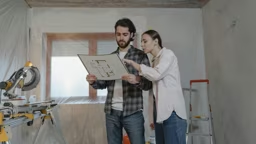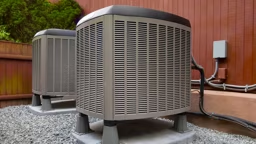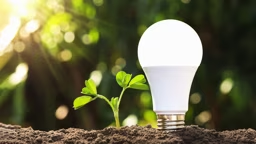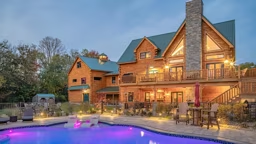But behind the buzz is an important message: Outfit your modern log home with the right appliances, fixtures and components, and you'll not only help save the planet but save your bank account, too. When you consider that 17 percent of the greenhouse gases in this country come from our homes—that's about 9,000 pounds per person per year—maybe it's time for a change.
To make green more than just a buzzword, the U.S. Green Building Council has established guidelines for green building known as the Leadership in Energy and Environmental Design (LEED) Green Building Rating System. "It's an immediate and measurable tool that gives builders a national best-in-class benchmark for green homebuilding," says Ashley Katz, communications coordinator for the U.S. Green Building Council. "There are currently 11,390 homes across the U.S. involved in the LEED for Homes program, and 502 homes that have already been LEED certified as a green home."
More than a handful of those are log homes. Essentially, the LEED for Homes program is a points-based system. The more green home components you have, the more points you get toward your LEED certification. While a green home is often only slightly more expensive to build upfront, it will pay dividends on the back end. Just to name a few examples: Energy Star windows cost 15 percent more than standard windows but will pay for themselves and end up saving you money in five to 12 years. And radiant heating costs twice as much to install but saves you 50 percent on your heating bills. If you're interested in building your own LEED-certified home, talk to a LEED-certified builder. (The U.S. Green Building Council has builder leads at usgbc.org.)
As a brief overview, here are 9 key components that may be found in any LEED-certified home:
1. Protect the Land Around You
Before you even start building, you can score points toward LEED certification by choosing the right site. Since most log homes are in remote, open areas, make sure you're not building on protected land, such as a wetland or an endangered-species habitat. Also, try to build in a way that doesn't disturb the surrounding habitat too much. And if possible, build or buy in an area close to others to minimize the overall impact on the land.2. Plan Around the Sun
Another simple way to make your home more energy efficient is to place it on the land correctly. Though it sounds simplistic, a step as easy as avoiding direct western exposure (which can overheat your home) can dramatically reduce energy consumption. "It's best to utilize the natural arc of the sun," says Clark Wilson, CEO and president of Green Builders Inc. in Austin, Texas. "For instance, we lay out our streets in an east-west direction, shielding homes from the western exposure of the sun. This thoughtful planning dramatically reduces energy consumption for cooling your home."3. Landscape Locally
We all want our yards to look nice. But this can be done without exotic plants from faraway locales, which tend to require more resources to thrive—and without having to water or fertilize as much. "Using natural and indigenous landscaping methods and materials will keep you from polluting the groundwater with chemicals," says Dal Loiselle, president of Evergreen Homes & Developments LLC, a company that has built several LEED-certified log homes.4. Choose Non-toxic Finishes
Log homes need a nice-looking finish that also protects logs from the elements, and that, of course, requires a good log stain. Contrary to popular belief, even stains can be earth-friendly. The key is choosing a low- or no-VOC product, which is more often than not water-based (or "latex" when it comes to paints).Thanks to increasing regulations on the VOC levels in paints and stains, low-VOC options are gradually becoming the norm rather than the exception, and most of the major stain manufacturers at the very least carry less-toxic product lines.
5. Go With Windows That Wow
To create a LEED-certified log home, you're going to need to get used to seeing the "Energy Star" sticker. For an appliance or home fixture to get the designation, it has to exceed the EPA's minimum requirements for water or energy usage. Windows are certainly one part of the home where the Energy Star seal is a must.The innovations in window design over the past few decades are nothing short of amazing, and manufacturers have come up with a number of different ways to reach that Energy Star rating—low-E glass, double- and triple-pane glass, windows with gas between the panes, and others. While choosing Energy Star over standard windows for an entire home costs $1,500 more on average, they'll also save you between $125 and $340 a year, so you'll recoup your expenses quickly.
6. Rethink Your HVAC
Heating and air conditioning accounts for more than half of the energy used in the average home. The good news is that starting with a log home already gets you off on the right foot. "Thanks to the thermal mass of log homes, you can eliminate or at least reduce the size of mechanical air-conditioning systems by making use of proper shading and cross ventilation," says Dal.In addition, radiant-floor heating, geothermal heat pumps, and even Energy Star-rated furnaces and air conditioners also can boost your home's efficiency. Radiant in-floor heating, which consists of a series of tubes that pump hot water beneath the surface of the floor, typically makes up the extra installation cost in three to five years. Heat pumps have similar statistics: Though they cost $3,000 to $7,000 more upfront, they cost 50 percent less than furnaces to operate.
7. Plug Into the Sun
We already touched on passive solar design, and you want to use the sun actively, too. "With log homes, it makes sense to use solar to heat water and provide electricity," Dal says. This is because log homes are usually in prime areas for harvesting sunlight. And a number of factors are combining to make it a more viable option for your home: The price of the materials to do this (solar cells) is coming down, and there are state and federal government programs to help offset the cost. The design also has improved, to the point that the newest panels are more efficient, not to mention barely noticeable on the home. And of course, there's the substantial savings you'll see on your energy bills.8. Save Water
A LEED-certified home takes a two-pronged approach to water conservation. First, it typically has low-consumption toilets and fixtures, which can save you anywhere from 12 to 16 gallons of water every day.The second component is a system that actually captures rainwater for reuse in the home. "By installing gutters with rain barrels, the captured water can be used in landscaping," Clark says. Even better: You can incorporate a water filtration system to make collected water potable.
9. Know Your Appliances
Along with windows and HVAC, the other place you'll find the Energy Star seal in a LEED-certified home is the appliances. There are at least 40 Energy Star products on the market right now, ranging from refrigerators and dishwashers to dehumidifiers and air cleaners. For a complete list of Energy Star-rated products, as well as a savings calculator that shows how much more expensive on average an Energy Star appliance is than its competitor and how long it will take you to make your money back, visit energystar.gov.
A Closer Look at Logs
One misconception about log homes is that they can't be green simply because so much lumber is used to build them. Quite the opposite is true."From an energy standpoint, log homes require less energy to produce than a conventionally built home, and they are more energy efficient to operate, too," says Dal Loiselle, president of Evergreen Homes & Developments LLC. "The energy efficiency is due to the thermal mass of the log walls. They store cool air in the summer and warmth in the winter. Log walls also naturally regulate humidity, so you won't need to run a dehumidifier in the summer and then a humidifier in the winter."
As far as concerns about too much lumber use, the key is choosing certified logs. "A lot of people shy away from log homes because they have heard horror stories about bad logging practices, so they feel that using wood is a bad choice environmentally," he says. "This is not the case as long as the forestry methods provided for a sustainable stewardship of the resource." To figure out if your log producer uses sustainable forestry methods, just ask. Most will be happy to give you a rundown of the source of their logs.











